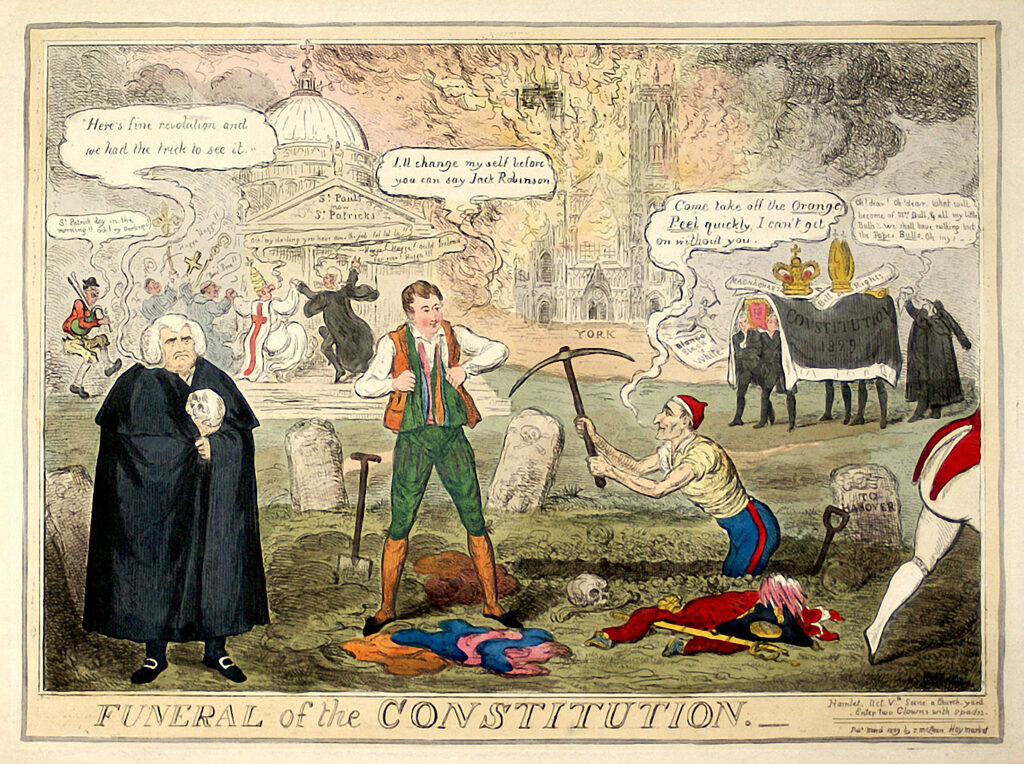Sir,—The letter by Mr John Stocks Powell (HI 33.2, March/April 2025), elucidating a hostile cartoon on the passage of the Catholic Relief Act, is very interesting and we are in his debt, but a couple of details could do with further explanation.
The man in black robes watching Peel and Wellington digging the grave of the constitution is not Archbishop Howley of Canterbury (who would have been shown wearing the puffed-out white ‘lawn-sleeves’ then worn by Anglican bishops) but the former lord chancellor, John Scott, Earl of Eldon, leader of the die-hard ultra-Tory faction which opposed Catholic Emancipation to the last. The ‘I told you so’ words he utters are in fact a quotation from the graveyard scene in Hamlet (Act 5, Scene 1), where Hamlet picks up the skull of the formerly lively and popular court jester, Yorick (held by Eldon in the picture), contrasting the past with Yorick’s present casual disinterment to make way for a new grave. Eldon’s black robes also identify him with Hamlet, who as the only sincere mourner for his dead father insists on continuing to wear black after the corrupt courtiers have discarded their mourning wear to celebrate the scandalous marriage of the widowed queen with her usurping brother-in-law; as a sincere mourner for the Protestant Constitution, Eldon wears his black robes and legal wig, while Peel and Wellington have casually discarded their orange clothes and military uniform.
The poster reading ‘Blanco Black is White’ is indeed a reference to the Spanish-born clergyman Blanco White—specifically to the fact that, having written against Catholic Emancipation during the 1820s, White announced his support for it during the campaign for the February 1829 Oxford by-election in which Peel, having resigned his seat to seek a mandate for his change of policy, was defeated by an ultra-Tory. Blanco White’s changed views reflected his belief that Catholic Emancipation was less dangerous than civil war in Ireland, and his growing concern that many of his new co-religionists were as religiously intolerant as the Spaniards of his youth (he eventually left the Church of England and died a Unitarian). But hard-line anti-Emancipationists such as the author of the picture regarded him as an opportunist ready to declare black was white when it suited him.—Yours etc.,
PATRICK MAUME
Dictionary of Irish Biography

